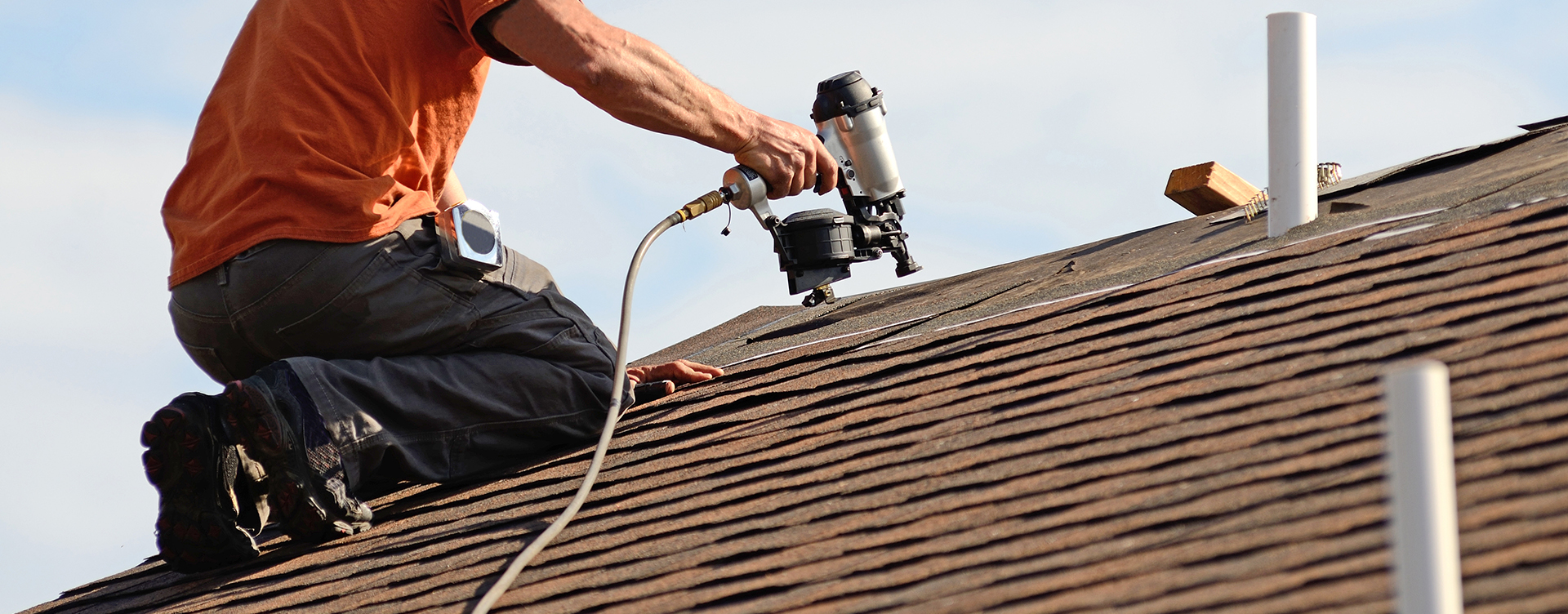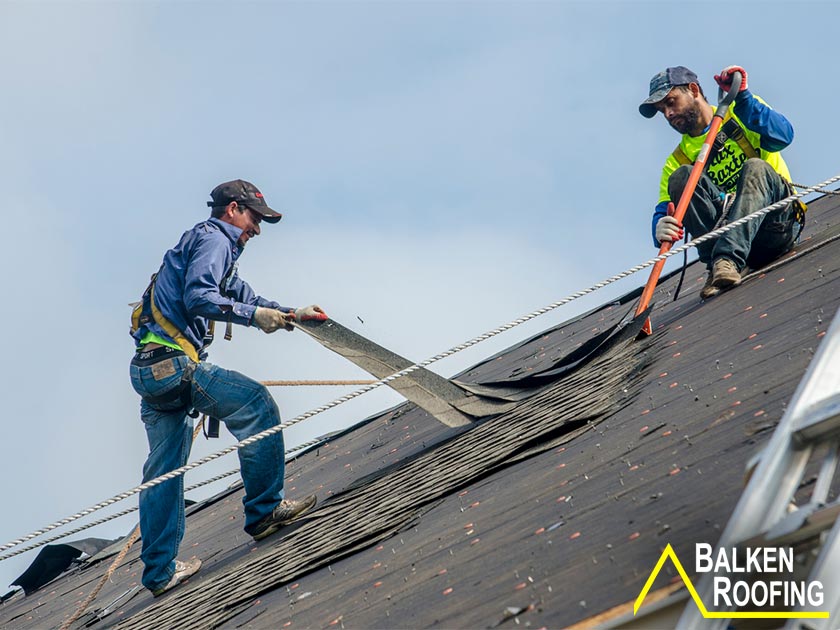Top Tips for Effective Roof Covering Repair Work: Keeping Your Home Safe
Reliable roofing repair work is important for keeping a secure home. House owners often neglect common problems that can cause significant issues if not attended to without delay. Regular examinations can determine potential threats beforehand. commercial roofing honolulu. Nevertheless, comprehending when to tackle repairs on your own and when to call an expert is just as crucial. Checking out these variables can assist avoid pricey errors, guaranteeing the durability of your roof covering. What are the crucial components to reflect upon in this choice?
Comprehending Common Roof Covering Issues
When house owners forget regular upkeep, they frequently come across common roofing issues that can bring about considerable damage. One prevalent trouble is roof shingles deterioration, which can occur as a result of age, climate problems, or inappropriate installment. Fractured, crinkled, or missing roof shingles endanger the roofing's stability, allowing water to permeate in. Another issue is the build-up of moss and algae, which not only influences looks yet can additionally trap dampness versus the roofing system, accelerating degeneration. In addition, flashing failure around chimneys and vents can cause leakages, especially throughout heavy rainfall. Stopped up rain gutters better intensify these problems, triggering water to pool and increasing the risk of structural damages. Property owners have to continue to be watchful to these problems, as resolving them without delay can prevent expensive repairs and lengthen the life expectancy of the roof. Understanding these common roof covering problems is vital for preserving a secure and audio home environment.
Inspecting Your Roof covering: What to Look For
When inspecting a roof covering, it is necessary to determine signs of damage and wear that might lead to more considerable issues. Routine upkeep checks can aid home owners capture troubles early, ensuring the roof remains in good problem. By being proactive, they can prolong the lifespan of their roof system and avoid pricey repairs.
Indications of Damages
A roofing system may show up undamaged from the ground, refined indications of damages can typically go unnoticed. House owners must be cautious in their evaluations, searching for missing out on, broken, or crinkling tiles that suggest wear. Dark places or streaks might recommend moisture buildup, while granules in gutters can indicate roof shingles wear and tear. Furthermore, inspection of blinking around smokeshafts and vents is important, as corrosion or gaps can bring about leaks. Inside the home, water discolorations on ceilings or wall surfaces may reveal covert roof issues. Mold and mildew growth in attics or along eaves can likewise aim to underlying problems. Regularly observing these indications can help homeowners address roofing damage without delay, ensuring their home remains safe and audio.
Regular Maintenance Checks
Routine upkeep checks are crucial for maintaining a roofing's integrity with time. Property owners need to carry out aesthetic assessments a minimum of two times a year, preferably in springtime and loss. Secret locations to take a look at include shingles for crinkling, breaking, or missing out on pieces, in addition to the blinking around chimneys and vents for indicators of corrosion or deterioration. Additionally, rain gutters must be free from debris to avoid water buildup, which can lead to leaks. Examining for mold or moss growth can additionally suggest wetness issues. Inside the home, ceilings and attic room spaces should be evaluated for water spots or indicators of leaks. By addressing these prospective issues early, property owners can extend the life expectancy of their roofing system and keep a risk-free, audio living environment.
Safety And Security First: Precautions for Roof Repair Work
Before starting on roof repair work, people need to prioritize safety to minimize threats connected with functioning at elevations. Correct preparation is vital; using ideal security gear, consisting of non-slip footwear, handwear covers, and a helmet, can considerably lower injury threats. In addition, making use of a tough ladder and ensuring it is put on stable ground is essential for secure accessibility to the roof.It is a good idea to inspect the roofing for prospective hazards, such as loosened tiles or unstable locations, prior to beginning work. Making use of safety belt and fall protection systems can supply extra security, particularly on steep roofs. It is essential to have a clear plan in location, consisting of having someone on the ground to aid in situation of emergencies. Functioning in ideal weather condition conditions, preventing strong winds or rainfall, will furthermore boost safety. By taking these safety measures, people can help assure a much safer roof fixing experience.
DIY vs. Expert Repairs: Making the Right Option

Crucial Tools and Materials for Roof Fixing
Selecting the right tools and products is a vital action for homeowners carrying out roof repairs, whether they go with a do it yourself strategy or hire experts. Important devices consist of a durable ladder for risk-free gain access to, roofing nails, a hammer, and an utility knife to cut materials precisely. A pry bar can aid in removing damaged shingles, while a caulking gun is important for securing leaks.In regards to products, asphalt shingles are frequently used because of their durability and cost-effectiveness. House owners should additionally take into consideration underlayment, which provides an extra layer of protection against dampness. Flashing materials are necessary for areas around smokeshafts and vents to avoid leaks. Security equipment, consisting of handwear covers and goggles, is similarly crucial to assure protection throughout repairs. By furnishing themselves with the right devices and materials, home owners can improve the effectiveness and safety and security of their roof fixing ventures.
Preventive Upkeep: Extending Your Roofing system's Life-span
To ensure a roofing system remains in optimal problem and optimizes its life expectancy, house owners must prioritize precautionary upkeep. Routine assessments are vital; they allow for the early discovery of concerns such as leaks, harmed shingles, or stopped up gutters. It is advisable to carry out these inspections at the very least two times a year, especially after severe weather events.Cleaning the roofing is another important aspect of upkeep. Removing debris like leaves, branches, and moss helps prevent water build-up and promotes appropriate water drainage. House owners must additionally inspect and preserve blinking around smokeshafts and vents to stay clear of water intrusion.Additionally, making sure proper ventilation and insulation in the attic can avoid moisture build-up, which can lead to mold and structural issues. By spending effort and time right into precautionary upkeep, property owners can substantially expand their roof's lifespan, conserving money on pricey fixings or substitutes over time.
Recognizing When to Change Your Roofing
Just how can a home owner determine the appropriate time to change their roofing system? Several indications can indicate the requirement for substitute. To start with, age is a crucial variable; most roof coverings last in between 20 to three decades, depending on material. House owners need to also inspect for visible indicators of damage, such as missing out on roof shingles, crinkling sides, or considerable granule loss. Water spots on ceilings or wall surfaces may indicate leaks, recommending underlying roof covering issues. In addition, a drooping roofline can direct to structural issues, demanding instant attention.Another factor to consider is power efficiency; boosted home heating or air conditioning costs may mirror poor insulation or ventilation because of roof damages. If fixings become straight from the source constant and costly, it may be more affordable to invest in a brand-new roof covering. By examining these factors, house owners can make informed decisions about roof covering replacement, making certain the stability and safety and security of their home.
Regularly Asked Inquiries
How Frequently Should I Examine My Roof Covering for Damages?
The frequency of roof assessments ought to preferably be biannually, specifically after severe weather condition occasions. Normal checks aid determine damage early, preventing pricey repairs and ensuring the long life of the roof's architectural stability and function.

Can I Fix My Roofing in Bad Weather?
Repairing a roofing in bad weather condition is typically inadvisable (honolulu roofing contractor). Rainfall, snow, or high winds redirected here can develop hazardous conditions, enhancing the threat of accidents and jeopardizing the quality of the fixing, eventually leading to additional damages
What Are the Indications I Required a Complete Roof Covering Replacement?
Indications indicating a complete roof substitute include substantial tile damages, leakages, sagging, noticeable mold and mildew, and age exceeding twenty years. House owners ought to examine these problems to identify if fixing efforts want for longer-term safety and security.
How much time Does a Regular Roof Repair Take?
Normally, a roof repair work can take anywhere from a few hours to numerous days, depending on the level of the damages. Factors such as climate conditions and the type of products used also affect the period.

Will My Homeowner's Insurance policy Cover Roofing Repairs?
Figuring out whether house owner's insurance coverage covers roof repair services depends upon the plan specifics. Normally, protection includes damages from unforeseen occasions, but exemptions might use. Insurance holders must review their terms or consult their insurance coverage representative for clearness.